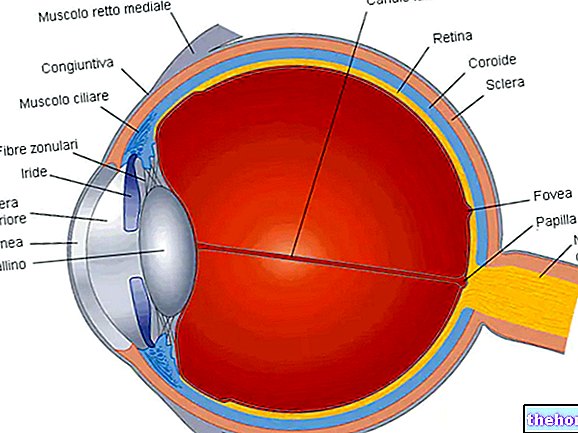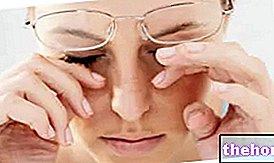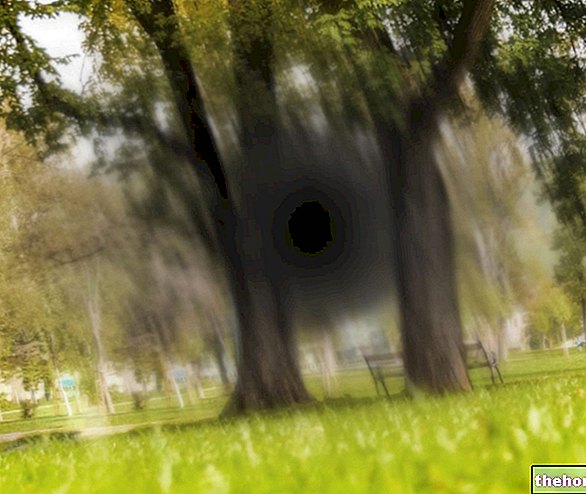What is blepharospasm
Blepharospasm is an involuntary contraction of the eyelid muscles, usually caused by a distressed state of the eye.

Chronic and bilateral spasms define benign essential blepharospasm (BEB), a focal dystonia that leads to episodic closure of both eyelids. BEB must be distinguished from secondary blepharospasm, which can occur in association with systemic diseases, neurological problems or specific ocular conditions.
The treatment of choice for blepharospasm is the periodic injection of botulinum toxin A into the orbicular muscle of the eye.
Note. Blepharospasm is a neurological condition that belongs to the group of disorders known as dystonia, which vary in symptoms, causes, course and treatments. Dystonias are generally characterized by involuntary muscle contractions, which force the body into abnormal and sometimes painful movements and postures.
Symptoms
In the initial stages, blepharospasm occurs with mild and occasional contractions, which arise only following specific triggering factors, such as exposure to bright lights, fatigue and emotional tension. The spasms do not cause pain, but can be very annoying. In the case of benign essential blepharospasm (BEB), over time the intermittent closing of the eyelids becomes more intense and frequent, especially during the day, and can be associated with facial spasms. In advanced cases, these episodes can cause functional blindness due to the inability to temporarily open the eyes.This can severely limit the performance of activities of daily living, such as reading and driving.
Blepharospasm can be characterized by a gradual increase in eye irritation and photophobia. Some people may also experience emotional fatigue or tension. Symptoms may diminish or stop while a person is sleeping or concentrating on a specific task. Sometimes, blepharospasm may be the first sign of a chronic movement disorder, especially if other facial spasms develop in addition to the continuous twitching of the eyelids; for example, when blepharospasm is part of Meige's syndrome (a chronic facial dystonia ) is associated with uncontrolled facial movements.
Blepharospasm can be secondary to eye disorders, including those that cause eye irritation (for example: blepharitis, trichiasis, corneal foreign body, keratoconjunctivitis sicca, etc.) and systemic neurological disorders associated with spasms (for example: Parkinson's disease).
Symptoms can be aggravated by fatigue, bright light, and stress.
Symptoms of blepharospasm include:
- Dry eyes
- Sensitivity to sunlight;
- Excessive eyelid movement and twitching, usually characterized by uncontrollable eyelid closing, lasting longer than the typical corneal reflex, sometimes several minutes or hours;
- Intermittent contractions of the eye muscles and surrounding facial area. Some patients have involuntary spasms that radiate to the neck and nose. Other movements may occur in addition to blepharospasm, such as forced opening of the jaw, retraction of the lips or protrusion of the tongue.
Blepharospasm should not be confused with:
- Ptosis: drooping of the eyelids, which can be caused by a weakness or paralysis of the levator muscle of the upper eyelid;
- Blepharitis: inflammation of the eyelids due to infections or allergies;
- Hemifacial spasm: non-dystonic condition involving various muscles on one side of the face; it is caused by irritation of the facial nerve. Muscle contractions are more rapid and transient than those in blepharospasm, and the condition is always one-sided.
Causes and risk factors
The mechanism behind blepharospasm is still not well understood. Some evidence obtained by functional neuroimaging suggests a dysfunction of the basal ganglia, nerve areas located at the base of the brain, which control the coordination of muscle movements. Other possible mechanisms proposed include sensitization of the trigeminal system and hyperactivity of the seventh cranial nerve, which induces simultaneous strong contractions of the eyelid muscles. In rare cases, genetic implications have been reported in the development of blepharospasm.
The exact cause of benign essential blepharospasm (BEB) is unknown and, by definition, this dystonia is not associated with any other disease or syndrome.
Involuntary twitching of the eyelids can be caused or aggravated by:
- Abuse of alcohol, tobacco or caffeine;
- Environmental irritants, such as wind, lights, sun, or air pollution
- Insomnia, fatigue, stress, or anxiety
- Irritation of the surface of the eye or eyelids (conjunctiva).
Blepharospasm can be triggered by the side effects of certain medications, such as those used to treat Parkinson's disease, as well as hormone therapies, including estrogen replacement for menopausal women. Blepharospasm can also be a symptom of acute withdrawal. from benzodiazepines. In addition to being associated with their discontinuation, prolonged use of these drugs is a known risk factor for the development of the disorder. In some rare cases, blepharospasm can be caused by trauma to the face or head due to damage to the basal ganglia.
The following conditions may precede or accompany the disorder:
- Blepharitis;
- Dry eyes
- Entropion;
- Sensitivity to light;
- Conjunctivitis;
- Trichiasis;
- Uveitis.
Even undiagnosed corneal abrasions can cause chronic eyelid twitching. Very rarely, eyelid spasms are a symptom of a more serious nervous system disorder. When blepharospasm is the result of these conditions, it is almost always accompanied by other characteristic symptoms; some of these include:
- Bell's palsy (facial palsy);
- Cervical dystonia (spasmodic torticollis);
- Oromandibular and facial dystonia;
- Multiple sclerosis;
- Parkinson's
- Tourette's syndrome (characterized by involuntary movements and tics).
Diagnosis
The diagnosis of blepharospasm is confirmed by a "careful history and physical examination, to determine the cause of the continuous movement of the eyelids and to rule out associated eye diseases and any underlying neurological disorders.
Neuroradiological studies are generally of limited use. The history is very important for diagnosis and allows the doctor to distinguish between primary (BEB) and secondary blepharospasm. In many cases, no cause is found. The doctor may observe involuntary contraction of the eyelid muscles during an episode of blepharospasm.
Eyelid twitching is rarely severe enough to require emergency medical treatment. However, chronic spasms can be a symptom of more severe nervous system disorders. You may need to see your doctor if you experience chronic eyelid spasms or have any of the following symptoms:
- The contraction does not resolve within a few weeks;
- The contraction begins to affect other parts of the face;
- The eyelid is drooping and the eye is red, painful or has an unusual discharge;
- The eyelid closes completely with each contraction or the patient has difficulty opening the eyes.
Treatment
To date, there is no definitive cure for blepharospasm, although several treatment options can reduce its severity. For the management of secondary blepharospasm it is obviously necessary to treat the underlying condition.




.jpg)























